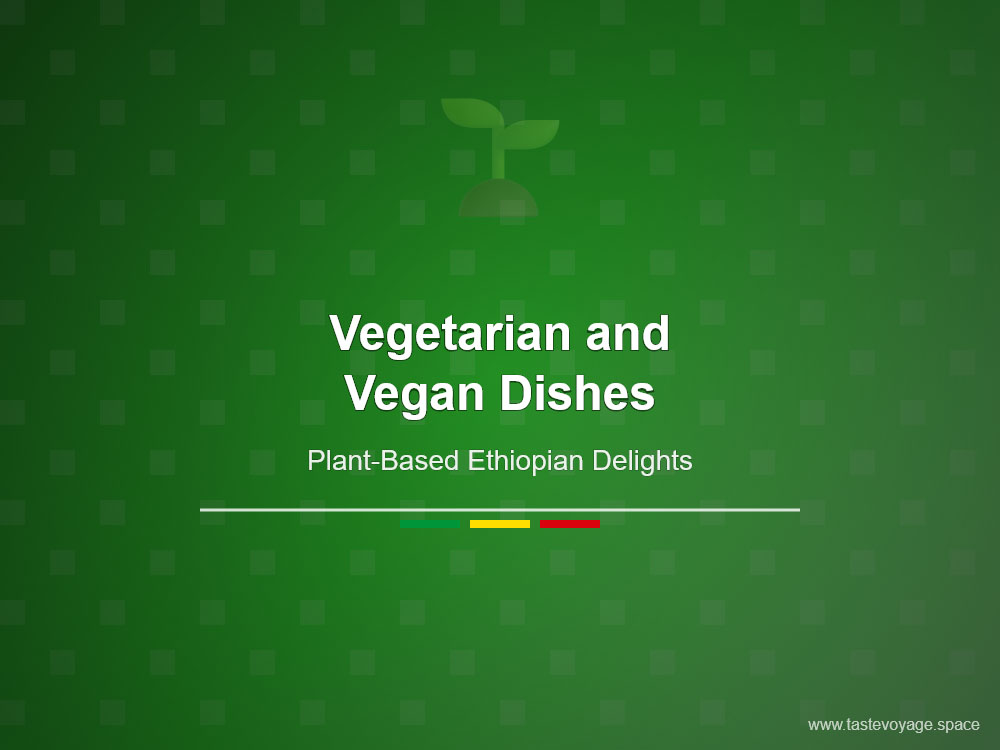How to Create an Authentic Ethiopian Plant-Based Feast
Travel the World Through Food >> Ethiopian Cuisine>>Vegetarian and Vegan Dishes>> How to Create an Authentic Ethiopian Plant-Based Feast
How to Create an Authentic Ethiopian Plant-Based Feast
Discovering the Rich Cultural Heritage of Ethiopian Plant-Based Feast
Ethiopian Cuisine is celebrated worldwide for its vibrant flavors, aromatic spices, and deep cultural roots. Among its most captivating offerings is the Ethiopian plant-based feast, a culinary tradition that showcases the richness of Ethiopia’s culinary artistry and spiritual practices. This feast is more than just a meal; it is a reflection of Ethiopia’s history, values, and community spirit. Exploring this dish offers an inviting glimpse into a world where food connects tradition, faith, and cultural identity.
The Cultural Significance of the Ethiopian Plant-Based Feast
Ethiopian food is deeply intertwined with religious and cultural life. The plant-based feast, often enjoyed during religious fasting periods, exemplifies this connection. During fasting seasons, many Ethiopians abstain from animal products, turning to a diverse array of vegetables, legumes, and grains. This practice underscores a community’s dedication to spiritual discipline and respect for tradition.
Beyond its religious roots, the feast acts as a symbol of hospitality and communal sharing. Families and communities gather around the table to enjoy a colorful spread that highlights Ethiopia’s agricultural richness. The act of sharing food in this manner fosters bonds, celebrates diversity, and honors Ethiopia’s longstanding traditions of generosity and respect for nature.
Culinary Significance and Unique Flavors
The Ethiopian plant-based feast is renowned for its bold flavors and unique culinary techniques. The dishes typically feature an array of ingredients like lentils, chickpeas, vegetables, and spicy berbere seasoning. These ingredients are combined to create harmonious flavors that are both hearty and nuanced.
A key element of this feast is the use of Injera, a traditional sourdough flatbread made from teff flour. Injera serves as both a plate and utensil, adding a tangy flavor that complements the various vegetable dishes. The presentation is as vibrant as the flavors—dishes are arranged on the Injera, creating a colorful tapestry of textures and tastes.
The culinary significance of this feast lies in its emphasis on plant-based ingredients, which reflect Ethiopia’s rich agricultural heritage. It showcases the country’s mastery in combining spices and ingredients to craft dishes that are nourishing, flavorful, and culturally meaningful. This focus on plant-based foods also highlights Ethiopia’s long-standing tradition of Vegetarian and vegan cuisine, appreciated both for health benefits and spiritual reasons.
Celebrating Ethiopian Food Culture
Experiencing an Ethiopian plant-based feast is an immersion into a vibrant food culture rooted in history and community. It celebrates not only the artistry of Ethiopian cooking but also the values of patience, tradition, and respect for nature. Whether enjoyed during a religious celebration or a special gathering, this feast offers a profound appreciation for food as a vessel of cultural expression.
In conclusion, the Ethiopian plant-based feast stands as a testament to Ethiopia’s rich culinary heritage. Its vibrant flavors, cultural significance, and emphasis on community make it a truly inspiring culinary experience. By exploring this tradition, you open a window into Ethiopia’s enduring cultural identity and the universal language of shared food.
